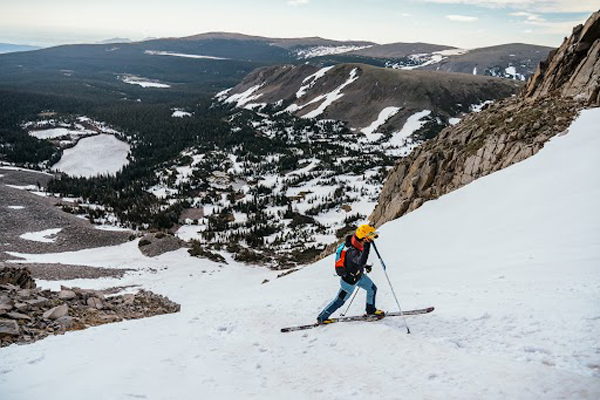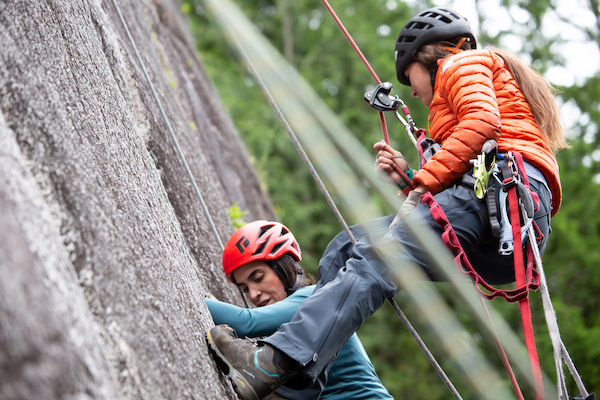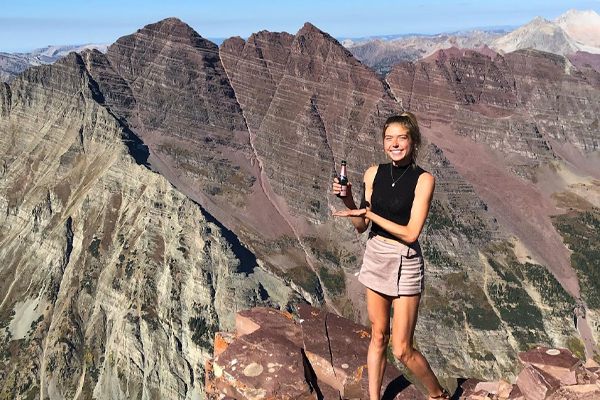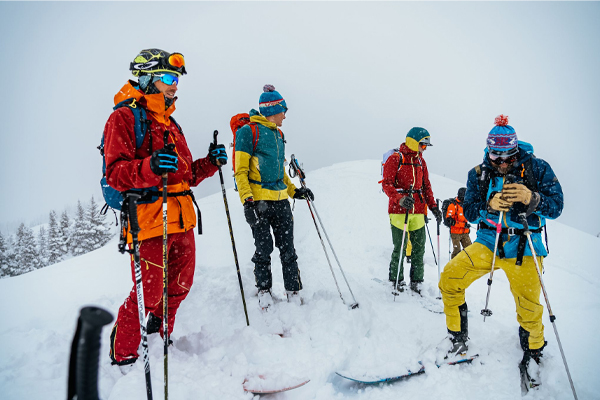Angela Lee - Parallel Traditions

Angela Lee received the American Alpine Club's Live Your Dream grant & traveled back home South Korea, here's her story...
- - -
The Korean folklore goes: the Creator called upon all domes and boulders of Korea to gather up north, where they would join to form the two thousand peaks of Geumgansan mountain range (금강산). Ulsanbawi (울산바위) headed north as well, but moved very slowly as it was one of the largest domes in the country. By the time Ulsanbawi reached Seorak Mountain, it heard that the range had already formed without it. Dejected and too embarrassed to return home, Ulsanbawi laid itself down at Seoraksan (설악산) as it found it to be a beautiful place to rest.
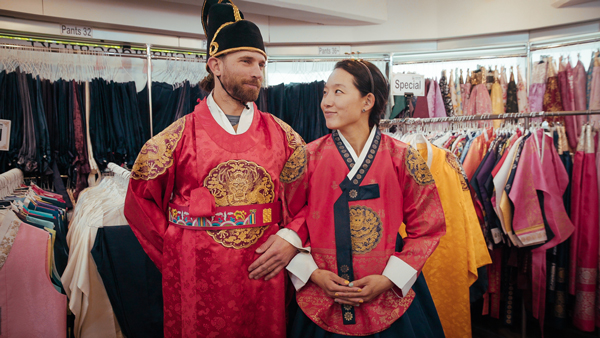
It was time for me to face my fears, dejection, and embarrassment that Ulsanbawi never did. I set out to return to my homeland to find peace amongst the granite domes and face my now-distant family connections.
Where I Come From
South Korea was home to me once. Though born in the U.S., I grew up in Korea from the age of 2 to 11, until my parents immigrated to Orange County, California. I did what good Korean-American kids are expected to do: I went to a decent university, and even went to law school so I could fight for immigrants and social justice. But I had become utterly despondent by capitalism and the sprawl of cities. I moved to the New Mexican deserts to get lost and be closer to nature. Somehow, I found happiness as a homestead farmer in the extremely rural San Luis Valley of southern Colorado.
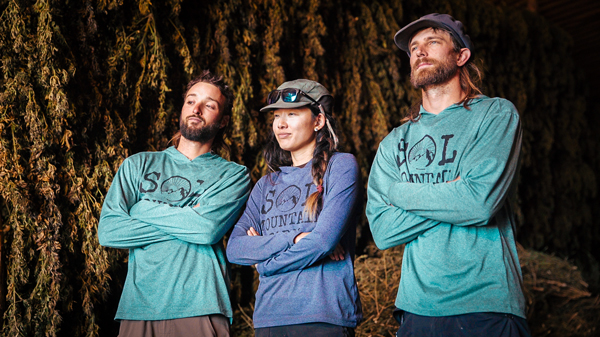
My traditional Korean parents were…not stoked.
Climbing helped me claw out of a dark, depressive state, and I began redefining my idea of success. It brought me to New Mexico, to the Rio Grande Gorge, to my partner Wes, and to our homestead, Sol Mountain Farm. Here, I found happiness in farming, reconnecting with nature, and caring for the land. As a steward for climbing areas and a growing female leader in my community, I began to feel successful.
But my parents saw me as a total failure. They were too embarrassed to even share with my extended family where I’d ended up: on a farm, in a small town of a few hundred people. Being the founder of a local climbing organization, the San Luis Valley Climbers Alliance – one of my proudest accomplishments – meant nothing to them if I didn’t have a well-paid job as a lawyer. My own parents could not accept my inexplicable divergence from the traditional path of “success.” So how could I face the rest of my family, who I hadn’t spoken to in over a decade?
Returning Home
I was on yet another daydreamy Mountain Project climbing expedition, virtually scoping out new areas and adding onto my impossibly long to-do list. “Is there climbing in Korea?” I wondered - a question likely fueled by a subconscious guilt of rapidly losing touch with my Korean family and heritage.
My jaw dropped when I first saw one of the most amazing topo images I’d ever seen: Ulsanbawi. The dome is strikingly beautiful – a sea of pure white granite aesthetically cut with long, continuous cracks. Like large painted brush strokes on paper. Immediately, I knew that it was time. I had to go back to Korea, go touch that granite, and figure out what this place means to me anymore.
I remembered that a friend of mine received the Live Your Dream Grant to go on a trip to Vedauwoo. “A total lottery win,” I thought. “…wait, could I make this list?” This certainly would not be like any other climbing trip – no, there was baggage before we even left. 11 years worth of baggage that weighed heavy on my conscience. I guess the lovely folks at AAC saw some value in that; they decided to support my trip back to Korea. Aside from making the trip financially possible in the first place, the grant would hopefully show my family some validity to my version of success.

Heart full of gratitude and a lot of nerves, I ventured back “home” with my partner, Wes, and the Austin climbers, Scotty and Edwin. To add to the uncertainty and wildness of the experience, three filmmaker women I’d never met: Beca, Hannah, and Morgan from Austin thought my story was worth telling. They tagged along to live their dream of making their first collaborative, woman-powered documentary...about me.
The addition of a full-blown film team added an unexpected layer of…work. I battled hard with expectations from others and myself. I’m just an ordinary rock climber. I don’t even climb that hard. I don’t push grades. So why is my story worth telling? What even IS my story? What did all these people fly out here for – to watch me fail? To watch my family relationships burn to the ground? The trip was riddled with self-doubt and insecurities before it even began.
Ulsanbawi – the Climbing
It was November, and we had prepared for the worst –a frigid, bone-chilling sufferfest during Korea’s shoulder season. But winter in Korea was slow to arrive that year, and late autumn in Seorak Mountain was uncharacteristically warm. We were lucky to enjoy fantastic climbing temps and even got to experience the famously vibrant fall colors of the maple and ginko trees. The smell of the ancient red pines in the lush forest filled a part of my soul that I never knew needed filled. I was entranced by the magical feeling of familiarity and reawakening of faint childhood memories that I cannot explain in words. For the first time since landing at the airport, I finally felt like I wasn't in a “foreign” country – I began to feel and see the mountain as my old home.
We set our eyes on Ulsanbawi for the first time, and not shockingly, it filled us with pure stoke. I peaked on the first day, onsighting a beautiful pitch with twin cracks (which might be my favorite thing in rock climbing, ever). My eyes swelled with tears as I reveled in the movement through the parallel crack system. In that moment, everything falls away. The body flows without thought. Dancing up the twin cracks, I embraced the exposure, truly “living my dream” in that present moment and reaching that ever-elusive flow state. If that was all I climbed this trip, I’d be psyched. This moment - this was what it was all about…right?

During the two weeks of climbing at Seorak Mountain, I would go on to attempt a 5.11a finger crack. Not being a competitive or goal-oriented person, I somewhat reluctantly chose this pitch as my “project” for the film and the grant. I stood there on the fifth pitch, completely frozen with sketchy gear at my waist, unable to make the move through the horribly sharp, flared, unprotectable finger crack. “Come on, you’re not even trying that hard!” my partner Wes shouted at me. The tears in my eyes were less sweet this time; I retreated from the difficult crux moves, blood pouring out of almost every finger. Wes led the route and I took us to the summit. The film crew awaited, and we gave them the summit cheers they waited all day for. Inside, I felt like a total failure, and my self-worth hit an all-time-low. To be honest, I didn’t have any fun on the whole route, and worse, I resented Wes deeply for it.
Like many other climbing-couple partnerships, Wes and I almost exclusively climb together. That day prompted us to have some of the hard conversations we needed to have. We both had to become vulnerable and be open about our very different needs, motivations, personalities, and goals in climbing. Wes, being the stronger climber, is goal-oriented and very competitive with himself. The hard motivation he uses for his success as a climber did the opposite for me. I instead spiraled into low self-esteem, a poor sense of self-worth, and into a hesitant, fearful climber. My reluctance to lead hard pitches and pass that along ungratefully to Wes also affected his self-esteem negatively, and my attitude and built-up resentments showed on the belays. We realized we were caught in an unhealthy cycle. It wasn’t that one magical conversation that fixedeverything, but it was the beginning of an awareness and openness in our relationship that allowed us to show up for each other, and to support each other’s unique needs.
Going up against a granite giant on the other side of my world came with many challenges. The physical challenge was obvious and grinding. Offwidth pitches with no end, re-learning the true meaning of a good 70’s sandbag, and slabs so blank you couldn’t think straight. But the bigger challenges appeared in intangible forms: of relationships, passion, drive, and the forever-present question of, “What the fuck are we doing out here?!”
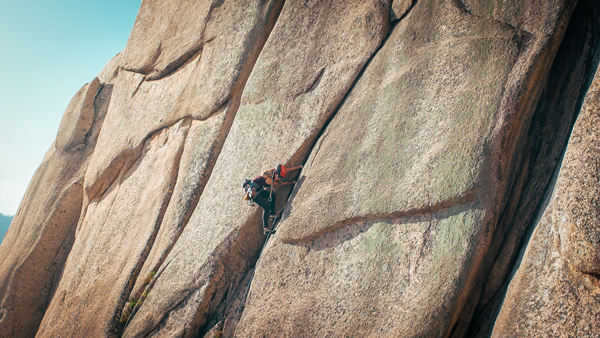
Ulsanbawi made us face what drives us at the core. It made us confront our egos and the holes in our relationships. It grinded us down during long approaches, blew us with treacherous winds, and made us question what it was all about. And when we get pushed to face those things, we venture out of our comfort zone and step into that wild space where growth and magic occur.
It wasn’t all perfect hand jams, onsights, and summit cheer (though there were plenty). Somewhere between the long pitches, sore bodies, sharp granite crystals, bloody fingers, bittersweet tears, and those hard conversations, we found what we were looking for: Growth and love. From fist stacks to learning how to be vulnerable, this trip tested all the skills we had as climbers, lovers, and human beings.
How would I explain to my traditional Korean family that all this ramblin’ about in mountains led me to my sense of success?
The Korean Culture – Traditional, and Not-So-Traditional
After two weeks of climbing, it was time to experience the culture of Korea with the whole crew. It was a nauseating sensation of feeling like a complete foreigner in a place that felt so utterlyfamiliar.
I met with my extended family in Seoul – my grandmother, my uncle, aunt, and three cousins. I introduced them to my rural “countryboy” farmer partner. They were impressed with the photos of us climbing and were curious about the farm.
But ultimately, the questions led to the ones I dreaded. “How much money are you making? When are you going to get a lawyer job? When are you going to start taking care of your parents? When are you going to move back to a city? When are you moving back to California to be closer to your parents?” The questions from my uncle, the current patriarch of the family, shed light to the rigid part of Korea’s culture I knew too well from my parents. These are not open-ended questions, but rather demands for a different kind of life that I ought to be living.
In Sokcho, where Seoraksan is located, I was able to reconnect with the traditional food and farming culture of Korea. I found a lot of inspiration in that countryside. The population there consists almost exclusively old folks who farm in self-sustaining communities, fermenting and preserving the season’s harvest. It was bits of what I remembered from my father’s side of the family who farmed in the South: what I endeared about Korean traditions.
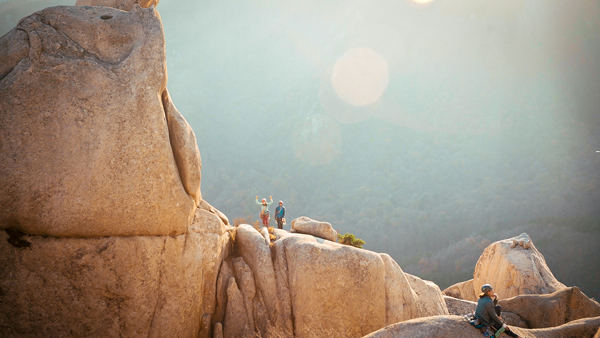
But Seoul is a densely populated metropolis with highly advanced technologies and infrastructure. This side of Korean tradition is based on consumerism - it is undoubtedly the epitome of Capitalism. Young Koreans desert the countryside and flock to the city for better careers and opportunities. Their “success” is defined narrowly, and it is one I can never hold for myself.
Anxiety filled me when I sat in the crowded subways in Seoul, commuting with the millions of other young Koreans. I look just like everyone here, yet I feel like a complete foreigner. I cannot relate to them. I was haunted by the thought that I could have been just like any one of these Seoulites. In those moments, my skin crawled with a confusing crisis of identity and self. My Otherness felt more profound than ever in both of my “homes” - here in Korea and the predominantly white, rural community of southern Colorado. In reflection, however, those moments of discomfort taught me a sense of peace and gratitude for the life that did find me, here in the mountain ranges of La Garita, Weminuche, and South San Juans.
In a traditional bath house in Sokcho, before the Texans had arrived in Korea, I split up with the boys and walked into the women-only baths alone. I undressed to reveal my naked body covered in many large tattoos. Tattoos are still taboo in Korea, and are still associated with gangs. Women do not have them – at least in the countryside – and tattoos are more accepted on men. In a huge steaming room full of a hundred other naked Korean women, I was overwhelmed by shame, humiliation, and embarrassment. I ran from tub to tub, submerging my body to hide from the relentless stares of disgust and older women shaking their heads in repulsive disappointment. The dozens of faces unapologetically shaming me easily turned into the faces of my family members.
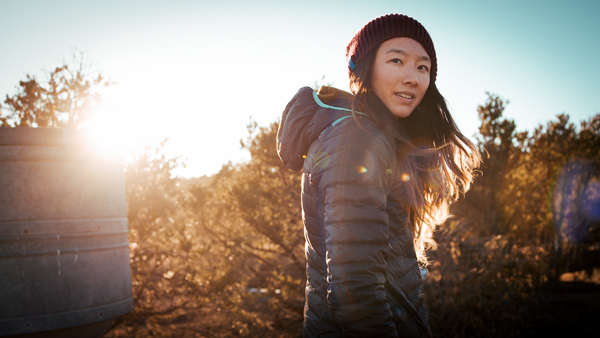
While I looked fully Korean, a big part of my being was simply not accepted – actually, totally rejected – by the traditional Korean culture. It was a literal manifestation of all my fears and insecurities of not belonging and not being loved by my family and my kind.
I feel a deep-rooted resentment against my parents for the pressure and expectations they put on me. But they have struggled for decades as immigrants in California, waiting for me to do what good Korean-American kids do. Get a good job. Move to a big city. Make a lot of money so they can finally live a comfortable life. I am their only hope to save them from their socioeconomic struggle.
Through all this, I realize my resentments are not against my parents personally. The truth is, I resent my own Korean culture. My parents simply embody that part of Koreanness that I clash with so hard. It has been extremely difficult for me to sit with this idea of hating something that makes up half of my cultural identity.
Enter the Trad Mom
It wasn’t all devastating realizations about my conflicted Korean-American identity, though. I knew wasn’t going to find acceptance from my actual family members or the “halmonies” in the bath house (Korean grandmas, akin to abuelitas). I did, however, find someone who would accept me and be proud of the success I found in climbing: my Trad Mom.
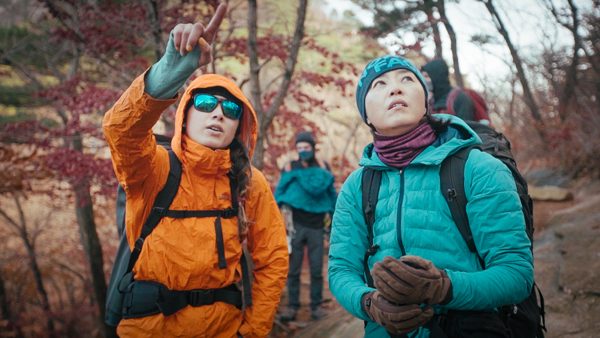
I was able to meet up with a professional Korean climber, Myounghee Lee. We lovingly nicknamed her my Trad Mom – the force of good against the evil of crusty, patriarchal Korean trad dads. I reached out to her prior to my trip and finally got to meet up with her in Seoul to climb, though the freezing temps kept us off the granite dome of Insubong (인수봉). While we hiked to the summit of Baegundae (백운대), we engaged in an unforgettable, meaningful discourse that gave me the sense of acceptance that I longed for.
Myounghee is a strong female leader in the Korean climbing community. She founded Korea’s first trad climbing festival to shift the climbing culture towards one of stewardship, free-climbing, and gender equality. Korean climbing history is rooted in aid climbing, and the climbing ethic is more of a “by any means necessary” style – stepping on bolts, bolting cracks, and summit-focused. Myounghee teaches Korean climbers crack climbing techniques so that the cracks were once only laybacked and bolted can remain natural. She also advocates for leave no trace and outdoor stewardship ethics, an area in which Korea has a long way to go.
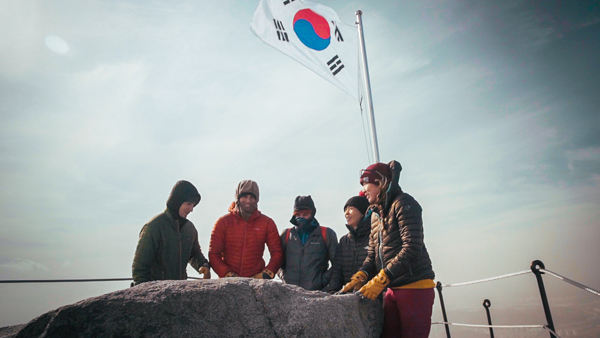
She explained that there are only a very small handful of trad climbers in Korea, and hardly any of them are women. Toxic masculinity runs rampant in Korea, a very patriarchal society where gender and age determine an unquestionable social status and dominance. Even as a professional climber, unknowing trad dads look down on her when she shows up at the crag, and at times, she is even more belittled when she sends their proj with ease. Through mentorship, education, and spreading awareness, Myounghee provides the means for young women to enter the highly male-dominant, intimidating, and new form of free, traditional multipitch climbing. She was impressed and encouraging of my work with the San Luis Valley Climbers Alliance and our mission to elevate underrepresented minorities, engage in stewardship, and build community.
I will never forget the conversations with Myounghee on the summit of Baegundae. While overlooking the entire city of Seoul, we celebrated our goals to SMASH the crusty patriarchyand uplift female climbers. We shared our love for crack climbing and our undying admiration for Indian Creek (she casually dropped that she worked a 5.13 finger crack on her first visit to Bears Ears!). Oh, and a ton of beta spray! She pointed out all the granite domes and best crack lines just outside Seoul, sharing her favorite lines and her deep connection to this place. She inadvertently taught me (a vigorous hater of unsolicited spray) that beta can be shared in a kind, meaningful, and egoless way! Myounghee inspired me to continue to rise as a female leader within my community with resilience, confidence, and strength. It was incredibly validating to feel so much love and support from my Korean hero, my Trad Mom. <3
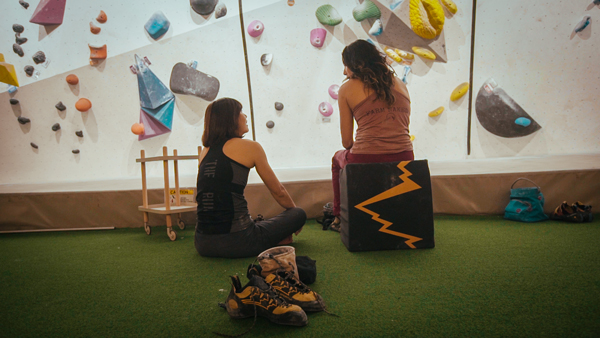
Life is Suffering
So what IS my story? What the hell kind of climbing trip was this?
To be honest, I left Korea feeling rather confused. There’s a strange polarity within me, and my identity as a Korean-American rock climbing farmer/lawyer feels insecure, unaccepted, even uncomfortable at times. My parents continue to struggle, waiting hopelessly for me to end their life of poverty. Yet here I am, at Sol Mountain Farm, selfishly enjoying the beautiful, natural world of the San Luis Valley, and doing everything I can to give back to the thing that has given me so much – climbing.
Ulsanbawi was too ashamed to return home and face the judgment, shame, and hard conversations waiting for it. My trip back to the homeland did not give me the answers I was searching for. I didn't send the 5.11 finger crack. I never received support or understanding of my Korean family. But unlike Ulsanbawi, at least I was brave enough to face the home I left behind. I may never be able to find common ground with my family, or have them understand how my climbing life pushes me to grow, helps me find success, and fills my life with meaning. But I sure as hell can try. I can try to find a middle ground to be a climbing’ woman farmer and rekindle my passion to practice law for immigrants and refugees. I can try to keep in touch with my relatives and continue sharing parts of my life, the happiness I’ve found in this natural world.
I’ve learned that it's not all about sending that project or having that perfect conversation with your relatives. The breakdowns and the failures are what teaches me the most in life. Honestly, I don’t care to arrive at the anchors, but choose to find pleasure and growth in the present moment – whether it is full of pain or joy. Much like the groveling offwidth pitches of Ulsanbawi, life is suffering. And in embracing and letting go of that suffering, we can find peace.
Of course, there’s the obvious unfinished business in the multitude of Korean granite cracks I’ve yet to jam. But reconnecting with my family – bitter or sweet – created this new space for relationships that I want to fill and explore. It may be hard work, but my connection to my family and my culture is worth kindling. I want my niece to know me, and I want to be a part of their lives. I may be forever disconcerted by the Capitalist urban sprawl of Seoul, and Korea may never truly feel “home” to me….yet I am completely enchanted by the history, the food and farming culture, and the future of Korean climbing. Maybe next year, I can stop by to hang with the fam again, climb Insubong, and then jaunt over to LiMing with Myoughee to put up some new lines. I can’t wait to go back.
This story was originally published in The Climbing Zine, Vol. XIX
Photos by @soltoseoulfilm

